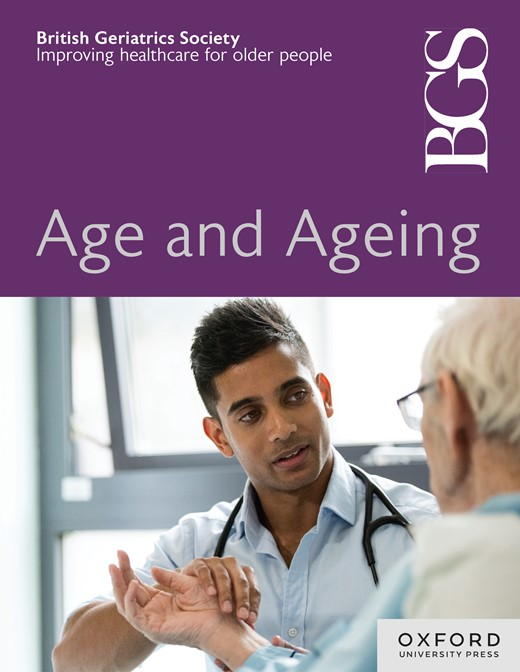数字生物标志物用于现实生活中的家庭虚弱监测:系统综述与荟萃分析
IF 6
2区 医学
Q1 GERIATRICS & GERONTOLOGY
引用次数: 0
摘要
虚弱的特征是生理功能下降和对压力源的易感性增加,与许多不良后果的增加有关。尽管用于检测老年人虚弱的数字生物标志物的数量正在增加,但在现实世界中,基于家庭的环境中,它们在早期检测和随访方面的有效性仍然缺乏证据。方法检索自建库至2024年8月1日的5个数据库。数据提取采用标准化表格。诊断准确性研究的质量评估用于评估纳入研究的偏倚风险和适用性。进行了一项荟萃分析,以评估脆性检测的总体敏感性和特异性。系统综述包括16项研究,确定了与虚弱检测相关的数字生物标志物,包括步态、活动、睡眠、心率、手部运动和房间转换。meta分析进一步显示,对稳健和预脆弱/脆弱受试者进行分类的总敏感性为0.78[95%置信区间(CI): 0.70-0.86],特异性为0.79 (95% CI: 0.72-0.86)。总体偏倚风险表明,所有纳入的研究均具有较高或不明确的偏倚风险。本研究提供了用于检测虚弱的数字生物标志物的全面特征,强调了它们在家庭环境中早期预测的潜力。这些发现有助于弥合证据与实践之间的差距,实现更主动和个性化的医疗保健监测。为了验证这些数字生物标志物作为诊断工具或预后指标的有效性,有必要进行更大样本量的进一步纵向研究。本文章由计算机程序翻译,如有差异,请以英文原文为准。
Digital biomarkers for real-life, home-based monitoring of frailty: a systematic review and meta-analysis
Background Frailty, characterised by decreased physiological function and increased vulnerability to stressors, was associated with an increase in numerous adverse outcomes. Although the number of digital biomarkers for detecting frailty in older adults is increasing, there remains a lack of evidence regarding their effectiveness for early detection and follow-up in real-world, home-based settings. Methods Five databases were searched from inception until 1 August 2024. Standardised forms were utilised for data extraction. The Quality Assessment of Diagnostic Accuracy Studies was used to assess the risk of bias and applicability of included studies. A meta-analysis was conducted to assess the overall sensitivity and specificity for frailty detection. Results The systematic review included 16 studies, identifying digital biomarkers relevant for frailty detection, including gait, activity, sleep, heart rate, hand movements and room transition. Meta-analysis further revealed pooled sensitivity of 0.78 [95% confidence interval (CI): 0.70–0.86] and specificity of 0.79 (95% CI: 0.72–0.86) to classify robust and pre-frailty/frailty participants. The overall risk of bias indicated that all the included studies were characterised as having a high or unclear risk of bias. Conclusion This study offers a thorough characterisation of digital biomarkers for detecting frailty, underscoring their potential for early prediction in home settings. These findings are instrumental in bridging the gap between evidence and practice, enabling more proactive and personalised healthcare monitoring. Further longitudinal studies involving larger sample sizes are necessary to validate the effectiveness of these digital biomarkers as diagnostic tools or prognostic indicators.
求助全文
通过发布文献求助,成功后即可免费获取论文全文。
去求助
来源期刊

Age and ageing
医学-老年医学
CiteScore
9.20
自引率
6.00%
发文量
796
审稿时长
4-8 weeks
期刊介绍:
Age and Ageing is an international journal publishing refereed original articles and commissioned reviews on geriatric medicine and gerontology. Its range includes research on ageing and clinical, epidemiological, and psychological aspects of later life.
 求助内容:
求助内容: 应助结果提醒方式:
应助结果提醒方式:


